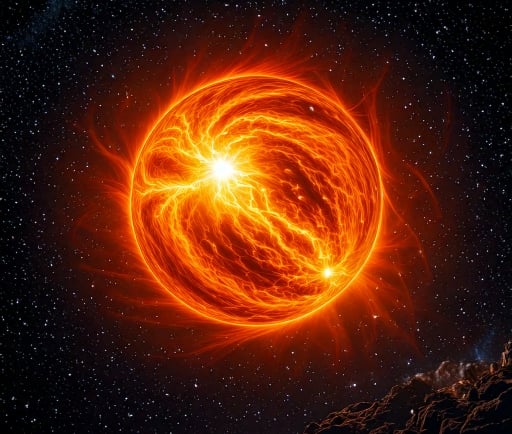The Radiance of Betelgeuse: A Supergiant Among Stars


Introduction to Betelgeuse
In the vast expanse of the universe, certain celestial bodies stand out due to their unique characteristics and grandeur. Among these luminaries is Betelgeuse, a blazing red supergiant that shines brilliantly in the night sky. This fascinating star, situated in the constellation Orion, has captivated the attention of astronomers and stargazers alike for centuries.
Characteristics of Betelgeuse
Betelgeuse is not just any star; it is one of the most massive stars known to humanity. With a diameter estimated to be over 1,000 times that of our Sun, Betelgeuse presents a magnificent spectacle. Its vibrant red hue is attributed to its relatively low surface temperature, which ranges between 3,200 to 3,600 degrees Celsius. This contrast of size and color makes it one of the brightest stars in our night sky, easily identifiable even to novice stargazers.
Betelgeuse in the Night Sky
This supergiant star is prominently visible in the constellation Orion, particularly during winter months in the Northern Hemisphere. Its location and brilliance mark it as a critical point of reference for many astronomical observations. Understanding Betelgeuse not only enhances our appreciation of the beauty of the night sky but also sheds light on the lifecycle of massive stars. As Betelgeuse nears the end of its life cycle, it's anticipated that it will explode as a supernova in the distant future, creating an even more stunning spectacle.
The study of Betelgeuse provides invaluable insights into the life and evolution of stars. Its dimming in 2019 raised questions among astronomers about its current state and future. As such, Betelgeuse serves as a vital subject for ongoing research, illustrating the dynamic nature of our universe.
